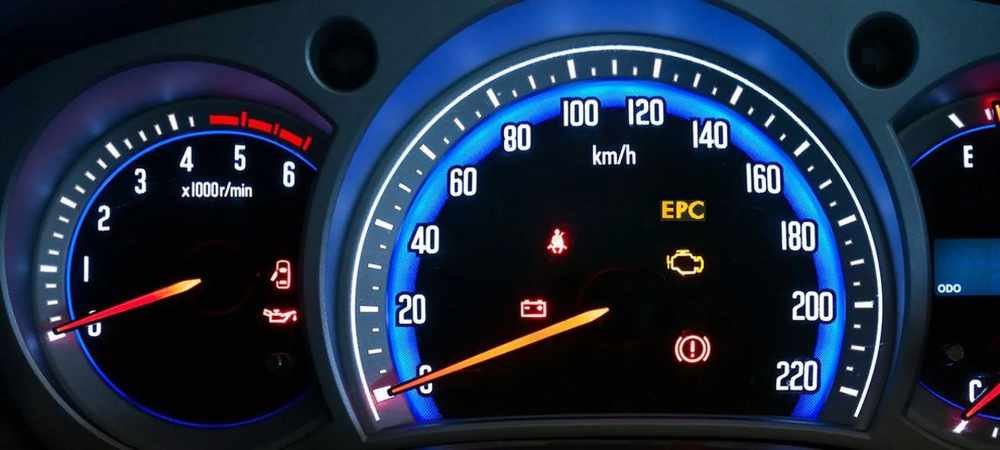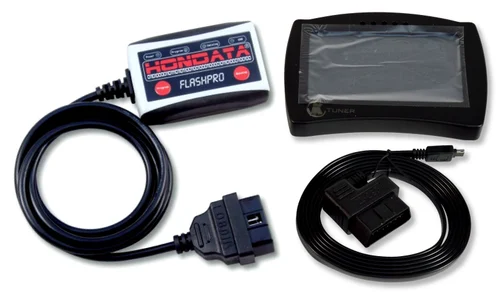If you’ve ever seen the EPC light flicker on your dashboard, you probably felt a jolt of worry. That small yellow symbol can signal anything from a minor sensor glitch to a major power control problem. While it’s not something to ignore, understanding what it means and how to handle it can save you time, stress, and money.
This guide breaks down everything about the EPC warning—what it means, why it appears, how to fix it, and ways to prevent it.
What Is the EPC Light?
The EPC (Electronic Power Control) light is a dashboard warning found mainly in Volkswagen, Audi, Skoda, and SEAT vehicles. It indicates a fault in the vehicle’s electronic engine management system. This system monitors throttle response, traction control, cruise control, and other vital components that help your car perform efficiently.
Think of it as your car’s digital nerve center. When something goes wrong within this system—like a faulty sensor or an electrical issue—the EPC warning light appears to alert you before damage worsens.
Example: Imagine you’re driving, and your car suddenly feels sluggish or unresponsive. That’s the EPC system stepping in to protect your engine by limiting power—a mode often called “limp mode.”
Common Reasons Why the EPC Light Comes On
Several issues can trigger this light, ranging from minor faults to major electrical problems. Here’s a detailed look at the most common causes.
1. Throttle System Malfunction
Your car’s throttle system controls how much air enters the engine when you press the accelerator. Modern vehicles use an electronic throttle control (ETC) instead of a traditional cable system. When this system fails, your car may lose power or struggle to accelerate smoothly.
Typical symptoms:
- Engine hesitates or stalls.
- Poor acceleration response.
- Sudden loss of engine power.
Quick tip: Dirt buildup on the throttle body can confuse sensors, so cleaning it regularly helps avoid false warnings.
2. Brake Light Switch Failure
Surprisingly, something as small as a brake light switch can trigger the EPC light. This switch sends signals to the engine control unit (ECU) when you press the brake pedal. If it malfunctions, your car might interpret it as inconsistent braking behavior.
Signs of a faulty brake light switch:
- Brake lights don’t illuminate.
- Cruise control doesn’t engage.
- EPC light and ABS light appear together.
Case Study:
A 2018 VW Polo owner noticed both the EPC and ABS lights illuminating intermittently. A quick diagnostic revealed a faulty brake light switch—a simple $20 part that took only 15 minutes to replace.
3. Faulty Engine Sensors
Your car relies on multiple sensors to manage air, fuel, and emissions. If one of these fails, it can disrupt the entire system.
Common culprits:
- Mass Air Flow (MAF) sensor: Measures air intake.
- Oxygen (O2) sensor: Monitors exhaust gases.
- MAP sensor: Detects pressure inside the intake manifold.
When these sensors send incorrect data, the ECU triggers the EPC light to prevent damage.
Quick Fix: Regularly inspect and clean sensors using a recommended cleaner. Replace them as part of preventive maintenance every 40,000–60,000 miles.
4. Electrical Wiring or Connection Problems
Loose or damaged wiring is another frequent cause. Modern vehicles depend heavily on electronics, so even a minor short or corrosion can send false signals to the EPC system.
Checklist to inspect:
- Frayed or melted wires.
- Corroded connectors.
- Moisture near electrical junctions.
A simple voltage test with a multimeter can often identify weak connections before they escalate into costly repairs.
5. Cruise Control or ABS System Issues
The cruise control and anti-lock braking system (ABS) are both linked to the EPC system. When one malfunctions, it can cascade into an EPC alert.
For example, a faulty ABS sensor may prevent your cruise control from working properly, prompting the EPC light to flash.
Tip: Always scan your car with an OBD-II scanner to pinpoint the faulty component rather than guessing.
How Serious Is the EPC Light?
While your vehicle might still run when this light comes on, it’s a sign that something needs immediate attention. The severity depends on the underlying issue.
| Condition | Severity | Symptoms | Action |
| Minor sensor error | Low | EPC light only | Scan and reset system |
| Throttle failure | High | Poor acceleration, limp mode | Stop driving, inspect throttle |
| Brake switch fault | Medium | Brake lights fail, EPC warning | Replace switch |
| Wiring fault | High | Multiple lights on dashboard | Visit mechanic |
Driving with this warning can lead to reduced power, increased fuel use, or even engine shutdown. It’s best to pull over safely and investigate rather than risk further damage.
What To Do When the EPC Light Comes On
Here’s a step-by-step guide you can follow before heading to the workshop:
Step 1 – Pull Over Safely
The first thing to do is find a safe spot to stop. Avoid pushing the engine further if it’s in limp mode.
Step 2 – Restart the Vehicle
Turn off the ignition for a minute, then restart. If the EPC light disappears, it may have been a temporary glitch. If it stays on, proceed to the next step.
Step 3 – Scan for Error Codes
An OBD-II scanner can help you identify the specific issue. Below are some common EPC-related error codes.
| Error Code | Description | Severity | Recommended Action |
| P0638 | Throttle actuator malfunction | High | Clean or replace throttle body |
| P2122 | Accelerator pedal position sensor low input | Medium | Replace pedal sensor |
| P0571 | Brake switch circuit malfunction | Low | Replace brake light switch |
| P0101 | MAF sensor out of range | Medium | Clean or replace MAF sensor |
Step 4 – Inspect Key Components
Check all relevant systems:
- Throttle body
- Brake switch
- Accelerator pedal
- Wiring harness
If you find corrosion or loose connections, clean and reconnect them securely.
Step 5 – Visit a Mechanic
If the warning persists, consult a certified technician. They’ll perform a deeper diagnostic test using factory-grade scanners.
EPC Light vs. Check Engine Light
Although these two lights may appear similar, they serve different purposes.
| Feature | EPC Light | Check Engine Light |
| Monitors | Electronic power control | Engine and emissions |
| Common causes | Throttle, sensors, wiring | Misfire, fuel issues, exhaust |
| Appearance | Yellow EPC text | Engine-shaped symbol |
| Severity | Can trigger limp mode | Often less urgent |
However, both lights may illuminate together if the same sensor affects both systems—for example, a faulty throttle body sensor.
Analogy:
Think of the check engine light as your car’s “fever,” while the EPC light is its “nerve pain.” They both need attention but for different reasons.
How To Prevent the EPC Light From Coming On
Prevention is always cheaper than repair. Following these simple habits keeps your electronic systems healthy:
Maintenance Tips:
- Clean the throttle body every 20,000 miles.
- Replace engine sensors as recommended.
- Inspect wiring for moisture or corrosion.
- Avoid cheap aftermarket modifications.
- Keep your software updated during service visits.
Preventive Maintenance Table
| Component | Inspection Interval | Action |
| Throttle Body | 20,000 miles | Clean or replace if sticking |
| Brake Light Switch | 30,000 miles | Replace if lights flicker |
| MAF/O2 Sensors | 40,000–60,000 miles | Clean regularly |
| Electrical Connectors | Every 6 months | Apply dielectric grease |
EPC Light in Different Car Brands
Each brand manages this system slightly differently, though the concept remains the same.
Volkswagen
VW models are most known for EPC warnings. Common causes include throttle body failure or faulty brake switches.
Audi
Luxury models like Audi A3 or A6 may show the light due to software issues or sensor misreads.
Skoda and SEAT
Since these brands share VW Group technology, EPC problems often mirror Volkswagen models.
Pro Tip: Always use brand-specific diagnostic tools for precise error identification.
Frequently Asked Questions
Q1. What does the EPC light mean?
It indicates a problem in your car’s electronic control system—usually throttle, sensor, or wiring related.
Q2. Can I drive with the EPC light on?
You can, but only short distances. The car might enter “limp mode” to prevent damage.
Q3. Will the EPC light reset itself?
Sometimes, if the fault is temporary. Otherwise, it requires manual clearing after repairs.
Q4. How much does it cost to fix?
Repairs range from $50 (brake switch) to $500+ (throttle body replacement), depending on the cause.
Final Thoughts – Don’t Ignore the EPC Warning
The EPC light may look harmless, but it’s your vehicle’s way of asking for help. Ignoring it could lead to costly repairs or safety risks. Stay proactive—perform regular maintenance, use proper diagnostic tools, and address minor faults early.
As one mechanic famously said:
“Small lights today prevent big problems tomorrow.”
Your car’s warning systems are like its voice—listen carefully, and it’ll reward you with smooth, reliable performance.
Key Takeaway: When that yellow EPC icon appears, don’t panic—diagnose, act, and prevent. With a bit of knowledge and attention, you’ll keep your ride running strong and your dashboard lights off for good.








Leave a Reply